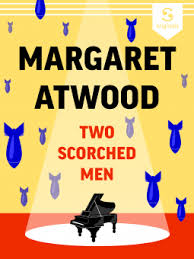Two Scorched Men
Seller:
Feedback:
1
0
0
Rating: 100.0% (1)
Member Since:
May 21st, 2024
Two Scorched Men
Margaret Atwood needs little introduction. If you don’t know her from her fifty-plus books and many awards and bestsellers, including her MaddAddam Trilogy, Alias Grace, and especially The Handmaid’s Tale, you’ll know her from that visionary and canonical novel’s adaptation into the Emmy-winning Hulu television series. At eighty-one, Atwood is more current and influential than ever, and with more than two million followers on Twitter, she’s achieved a kind of cool generally reserved for rock stars. (Bob Dylan’s got nothing on her.)
In her Scribd Original story Two Scorched Men, Atwood takes a personal turn and returns to characters and places drawn from her own life. Her unnamed narrator pays tribute in fictional form to two men Atwood knew during the years she and her partner, Graeme Gibson, spent in Provence: John, a hotheaded Irishman who served in the Royal Navy during World War II and barely survived the deadly battles in the South Pacific; and François, a wry and affable Frenchman, who was once an operative in the French Resistance and led a life shaped by tragedy. As Atwood writes here, both men knew “I would someday relate their lives for them. Why did they want this? Why does anyone? We resist the notion that we’ll become mere handfuls of dust, so we wish to become words instead. Breath in the mouths of others.”
Breathed into rich and dimensional life in these pages is the exquisite yet vaguely haunted house that the narrator and her husband, Tig, rented from John; the adjacent ancient forest and its allures and dangers; the rough country roads walked and retraced in dreams; the bloody history of the south of France, including the atrocities visited on medieval heretics and, centuries later, the guerrilla fighters who murdered Germans in an effort to free France from occupation. But at the center of the story is the touching friendship between John and François: how they indulge each other’s eccentricities and forgive each other their faults and psychic scars. With great precision and affection are their voices inhabited: John’s uproarious rants at human foolishness, his boasts about his playboy days as an advertising man, and a tempestuousness that so clearly covers for wounds that may never heal. By contrast, François is given to teasing misdirections and wordplay in the name of fun and a love of the absurd that draws everyone in. Tig, the husband of the narrator and a character so often featured in Atwood’s stories, speaks here as well. Practical, he’s a voice of reason and anchors the story’s narrator, much as John and François anchor one another in the world.
In these enduring and endearing relationships, so much of Atwood’s art and wisdom are on display: how ably she balances life’s inevitable injuries with beauty and humor, the pain of loss with the curative powers of the imagination. What better time in Atwood’s creative life—in fact, in our collective lives post a global pandemic—to accept that none of us gets out of life unscathed, that we are all mortal, perfectly imperfect, but that there is solace in friendship and laughter in remembering? Indelible detail by detail, sentence by sentence, Atwood is instructing her reader on resilience. We do what we can for each other, she tells us here, and thank goodness for that.



